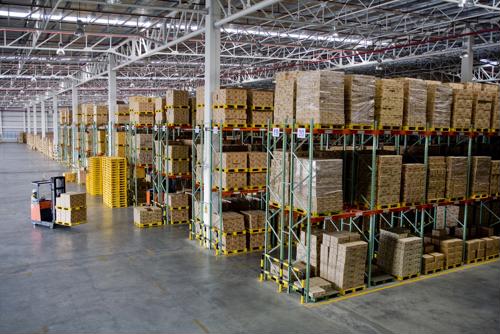
Maintenance and repair operations (MRO) can include activities across a wide range of disciplines and using a diverse array of materials. As a result, organizations must develop strategies to track operations across locations and measure performance in real time.
Traditional paper-based processes are simply not equipped to keep up. Besides the overhead of trying to manage paper records, report back to the office periodically with updates and duplicate data entry into electronic systems, the practice is also ill-equipped to keep up with the pace of operations in today’s digital world. Furthermore, manual processes can lead to higher rates of human error, as small clerical mistakes can lead to inaccuracies across multiple systems.
It’s time for businesses to embrace mobile devices and mobile data collection strategies to help them track MRO and field service operations in real time. Besides creating more transparency within this business, such a strategy can drive productivity gains and make work much easier for the employees trying to get the job done day in and day out. The result is a much more cost-efficient operational climate as businesses can get more value from their employees as workers focus their time on value-related tasks instead of manual data entry and documentation.
LEARN MORE about digitized automation in MRO to spur transparency across operations »
The MRO Problem
Maintenance often ends up slipping into the background.
In a Modern Materials Handling report, industry experts Rick Wakeland and Phil Hebert sum up their experiences consulting on MRO projects. The two experts pooled their knowledge from initiatives happening across a wide range of industries and found, surprisingly, that the problems businesses face are fairly similar across most sectors. For most MRO teams, the problems stem from underlying issues of how maintenance and field services are handled, not necessarily unique industry requirements.
The news source highlighted a general lack of awareness and transparency into MRO tasks, in particular, as a key problem for many organizations. Maintenance often ends up slipping into the background because most businesses will only end up putting resources into a team if its limitations seem like an active problem for the business. Over time, however, paying less attention to MRO and field services allows small issues to escalate until they create a major problem. Common issues emphasized by Hebert and Wakeland included:
- Storing large quantities of outdated materials
- Inability to find materials to keep pace with work orders
- Frequent inaccuracy of inventory lists
- Unreasonably high back order rates
These day-to-day inventory management issues eventually trickled down to reduced productivity, increased downtime and high costs of expediting parts during an emergency, the report said. All of this adds up to a situation in which many MRO teams are dealing with very solvable problems if organizations are willing to put resources into upgrades. The authors recommended companies develop key performance indicators (KPIs) to allow for greater day-to-day oversight of MRO activities. To take full advantage of KPIs, businesses should upgrade their inventory management procedures to ensure real-time visibility across the business.
Understanding the Need for Constant Visibility
Real-time transparency may not seem necessary to many aspects of maintenance operations because plenty of inventory items don’t seem particularly valuable on their own. However, the nature of maintenance operations makes less valuable assets incredibly important. On a day-to-day basis, maintenance teams may go through materials in a predictable, manageable way. But when an emergency strikes, unexpected consumption occurs and not having enough of a given part or resource can lead to escalating costs that far outweigh the value of the actual item.
This point came across in a separate Modern Materials Handling report. In this story, the news source highlighted that many consumables handled within MRO and field services processes are extremely inexpensive by nature. As such, organizations don’t worry about tracking them in detail because having excess supply or letting a few assets go to waste isn’t costly enough to justify the cost of managing the goods more closely. In practice, this strategy ends up falling apart fast when an emergency hits and a consumable that is necessary for proper response is unavailable. Suddenly, the cost of the downtime far exceeds the expense of simply maintaining better inventory records.
On top of all this, distributors are implementing modern technologies that streamline inventory replenishment processes and simplify MRO inventory management in the consumables space, but only if organizations can keep up with modernized digital services, the report explained.
 Don’t ignore your maintenance teams when developing inventory management strategies.
Don’t ignore your maintenance teams when developing inventory management strategies.Using Mobile Data Collection to Drive MRO, Field Services Gains
Imagine you have a maintenance worker heading to a remote facility to perform a repair. There’s a small warehouse at that location and your records indicate the necessary parts are present. The employee gets there, only to find that a necessary material has passed an expiration date and isn’t usable. That employee now needs to travel back to the main warehouse and start over. This kind of problem can be avoided with a combination of barcoding and mobile data collection. Barcode scanners can provide real-time updates on asset disposition, cycle counts, etc. when relevant details are programmed into an enterprise resource planning situation.
If your ERP is aligned with a mobile app, your workers can use a combination of smartphone apps, ERP systems and barcode scanners to track assets, look up historic data to identify potential problems and allow for real-time updates and optimization. With these tools in place, organizations can establish alerts when assets expire, digitize their cycle counts to ensure they always have necessary assets and automate many facets of inventory management. Upgrading these processes with the support of mobile technologies can go a long way in empowering organizations to make their workers more productive and drive efficiency gains across MRO and field service tasks.





